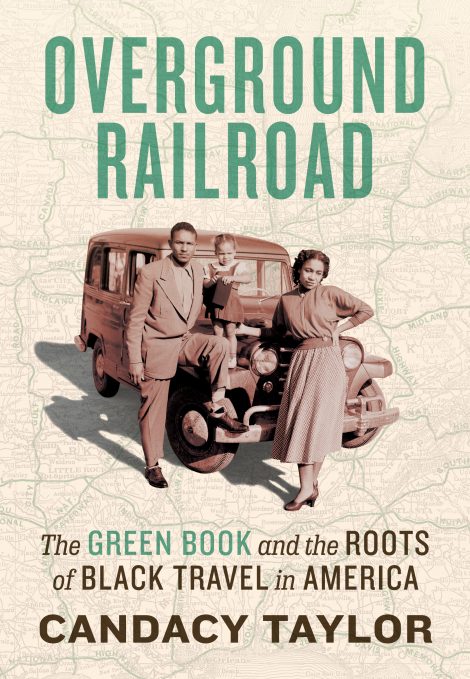
OVERGROUND RAILROAD
The Green Book and the Roots of Black Travel in America
Published from 1936 to 1966, the Green Book was hailed as the “black travel guide to America.” At that time, it was very dangerous and difficult for African Americans to travel because black travelers couldn’t eat, sleep, or buy gas at most white-owned businesses. The Green Book listed hotels, restaurants, gas stations, and other businesses that were safe for black travelers. It was a resourceful and innovative solution to a horrific problem. It took courage to be listed in the Green Book, and Overground Railroad celebrates the stories of those who put their names in the book and stood up against segregation.
Published from 1936 to 1966, the Green Book was hailed as the “black travel guide to America.” At that time, it was very dangerous and difficult for African Americans to travel because black travelers couldn’t eat, sleep, or buy gas at most white-owned businesses. The Green Book listed hotels, restaurants, gas stations, and other businesses that were safe for black travelers. It was a resourceful and innovative solution to a horrific problem. It took courage to be listed in the Green Book, and Overground Railroad celebrates the stories of those who put their names in the book and stood up against segregation. It shows the history of the Green Book, how we arrived at our present historical moment, and how far we still have to go when it comes to race relations in America.
- Abrams Press
- Hardcover
- January 2020
- 360 Pages
- 9781419738173
About Candacy Taylor
Candacy Taylor is an award-winning author, photographer and cultural documentarian. Her work has been featured in over 50 media outlets including the New Yorker, The Atlantic, and Newsweek. She is the recipient of numerous fellowships and grant awards including, The Hutchins Center at Harvard University, The Schomburg Center, The National Endowment for the Humanities, The National Park Service, The American Council of Learned Societies, and National Geographic. She received an Archie Green Fellowship from the American Folklife Center at the Library of Congress, and was the only person to have received the award twice. She lives in Denver, Colorado.
Praise
“…a fascinating history of black travel. telling the sweeping story of black travel within Jim Crow America across four decades.” –The New York Times Book Review
“In scope and tone, ‘Overground Railroad’ recalls Isabel Wilkerson’s ‘The Warmth of Other Suns’…At its center, the book is a nuanced commentary of how black bodies have been monitored, censured or violated, and it compellingly pulls readers into the current news cycle.” –The Los Angeles Times
Discussion Questions
1. Throughout the book, what were the most common images or stories you associated with “driving while black”? How does the author’s description align with or differ from those images or stories?
2. Discuss the book’s title and how the dangers on the modern roads of the Green Book era (circa 1934–1970) were the same or different from the Underground Railroad during the slavery era.
3. The author presents Green Book publisher, Victor Hugo Green, in heroic terms, stating that the guide’s longevity and success stem from his “vision, grit, creativity, and stamina.” Was he a hero? Should he be regarded as important a publisher as John H. Johnson of Ebony and Jet magazines?
4. Why do you think the Green Book lasted for decades, outlasting all of the other travel guides for African American people?
5. The author states that “given the violence that black travelers encountered on the road, the Green Book was an ingenious solution to a horrific problem.” What other solutions could have been possible?
6. Of the many sites mentioned from the Jim Crow era, very few of them are still in existence. On the subject of integration, Florida activist Georgia Ayers states, “We got what we wanted, but we lost what we had.” Do you agree or disagree? Why?
7. The author helps readers make connections between white supremacy and government policies that impacted the lives of Black people. How have times changed or remained the same?
8. In what ways are current travel restrictions to African American people similar to those that are represented in the book? In addition to the dangers of “driving while black” and being stopped by the police, what other kinds of discrimination did Black people experience? How are these discriminatory practices still evident in today’s society?
9. Why do you think the author used her stepfather’s experiences to relay the dangers of travel for African American people? How did his life experiences parallel the broader historic experiences that Taylor discusses throughout the book?
